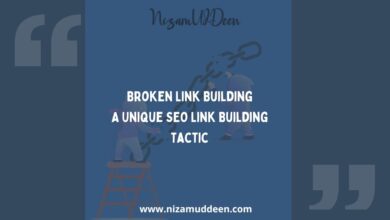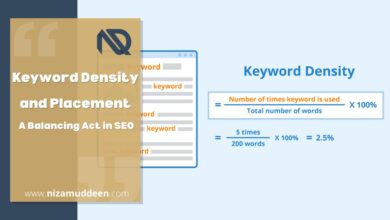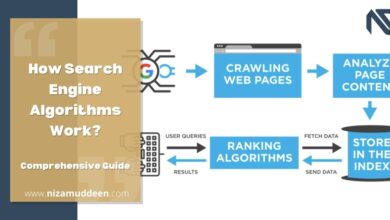Hello there! Ever wondered how the internet works behind the scenes?
Well, we’re about to dive into a cool topic: making the web a better place for you!
Okay, so here’s the deal.
When you’re surfing the internet, it’s like exploring a massive library with tons of webpages.
Now, not all those webpages are equally awesome. Some are a bit outdated, some are confusing, and others are just not that interesting.
Our mission is to figure out which pages need a little makeover to make your online experience smoother and more fun.
Why does this matter?
Imagine you’re looking for info on your favorite hobby or trying to buy something online. You want the pages you visit to be quick, accurate, and interesting, right?
Pages that are slow or not helpful can be a bit of a buzzkill.
So, we’re on a journey to understand and improve those not-so-great pages. We’ll learn about the tools experts use, the good and not-so-good things that can happen, and some clever tricks to make all webpages better, not just by removing stuff but by adding cool new things!
My goal is simple – I want your time online to be awesome.
When you’re searching for something, we want the websites you find to be like your favorite books on a shelf – easy to find, exciting to read, and exactly what you’re looking for.
So, let’s dive into the world of making the internet a better place, one webpage at a time!
Understanding Low-Quality Content
Hey there! Ever picked up a book and found it wasn’t as exciting or helpful as you hoped? Well, webpages can be a bit like that too.
We’ll explore the characteristics of low-quality content, pinpointing elements that are outdated, confusing, or simply not up to par.
Definition of Low-Quality Content
Low-quality content refers to web pages or posts that do not meet the standards set by search engines and fail to provide value to users.
Understanding what constitutes low-quality content is crucial for maintaining a website’s SEO health.
Relevance: Content that is irrelevant to the website’s theme or the user’s search intent may be deemed low-quality.
Accuracy: Information that is outdated, inaccurate, or misleading can negatively impact the quality of content.
Uniqueness: Duplicate or plagiarized content is generally considered of low quality by search engines.
Engagement: Content lacking user engagement, such as low dwell time or high bounce rates, may be flagged as low-quality.
Common Characteristics of Low-Quality Pages and Posts
Identifying common characteristics helps in recognizing low-quality content efficiently. Various aspects can be analyzed to determine if a page or post falls into the low-quality category.
Thin Content: Pages with minimal or insufficient content may be considered low-quality. This includes pages with very few words or lacking substantive information.
Keyword Stuffing: Excessive and unnatural use of keywords can lead to poor content quality.
Poor Formatting: Content that lacks proper formatting, readability, or multimedia elements can be perceived as low-quality.
High Bounce Rate: Pages with a high bounce rate may indicate that users find the content unhelpful or irrelevant.
Impact of Low-Quality Content on SEO Performance
Understanding the consequences of low-quality content is crucial for devising an effective content strategy. Such content can have a detrimental impact on a website’s overall SEO performance.
Search Engine Rankings: Low-quality content can lead to a decrease in search engine rankings, making it harder for the website to be discovered by users.
User Experience: Poor-quality content can result in a negative user experience, affecting factors such as user satisfaction and trust.
Crawl Budget: Search engine crawlers allocate crawl budget based on the perceived value of content. Low-quality pages may consume crawl budget without providing significant value.
By comprehending these aspects, website owners and content creators can proactively work towards identifying and rectifying low-quality content, ultimately enhancing their website’s SEO performance.
Understanding Low-Quality Content
Ever felt frustrated when a webpage just doesn’t have what you need or is more confusing than helpful?
We’ll discover what makes some webpages less-than-stellar, whether it’s outdated information, confusing layouts, or just missing the mark.
Definition of Low-Quality Content
Low-quality content refers to web pages or posts that do not meet the standards set by search engines and fail to provide value to users. Understanding what constitutes low-quality content is crucial for maintaining a website’s SEO health.
Relevance: Content that is irrelevant to the website’s theme or the user’s search intent may be deemed low-quality.
Accuracy: Information that is outdated, inaccurate, or misleading can negatively impact the quality of content.
Uniqueness: Duplicate or plagiarized content is generally considered of low quality by search engines.
Engagement: Content lacking user engagement, such as low dwell time or high bounce rates, may be flagged as low-quality.
Common Characteristics of Low-Quality Pages and Posts
Identifying common characteristics helps in recognizing low-quality content efficiently. Various aspects can be analyzed to determine if a page or post falls into the low-quality category.
Thin Content: Pages with minimal or insufficient content may be considered low-quality. This includes pages with very few words or lacking substantive information.
Keyword Stuffing: Excessive and unnatural use of keywords can lead to poor content quality.
Poor Formatting: Content that lacks proper formatting, readability, or multimedia elements can be perceived as low-quality.
High Bounce Rate: Pages with a high bounce rate may indicate that users find the content unhelpful or irrelevant.
Impact of Low-Quality Content on SEO Performance
Understanding the consequences of low-quality content is crucial for devising an effective content strategy. Such content can have a detrimental impact on a website’s overall SEO performance.
Search Engine Rankings: Low-quality content can lead to a decrease in search engine rankings, making it harder for the website to be discovered by users.
User Experience: Poor-quality content can result in a negative user experience, affecting factors such as user satisfaction and trust.
Crawl Budget: Search engine crawlers allocate crawl budget based on the perceived value of content. Low-quality pages may consume crawl budget without providing significant value.
By comprehending these aspects, website owners and content creators can proactively work towards identifying and rectifying low-quality content, ultimately enhancing their website’s SEO performance.
Risks and Benefits of Removing Content
Ever wondered about the consequences of cleaning up and tweaking a website? It’s like giving your digital space a makeover.
Think of it as a balancing act – understanding what might go a bit wonky and what fantastic improvements could come your way.
Potential Risks Associated with Content Removal
Before embarking on the process of content removal, it’s essential to be aware of potential risks that may accompany this strategy. Understanding these risks allows for strategic planning to mitigate any negative impacts.
Traffic Fluctuations:
Explanation: Removing content can lead to fluctuations in website traffic, especially if the removed content was driving significant visits.
Mitigation: Prioritize a phased approach to minimize sudden traffic drops. Communicate changes to users through site notifications.
Backlink Impact:
Explanation: Pages with backlinks contribute to a website’s authority. Removing content may result in the loss of valuable backlinks, affecting the site’s link profile.
Mitigation: Implement 301 redirects for removed content to preserve link equity. Monitor backlink changes using tools like Ahrefs or Moz.
SEO Benefits of Removing Low-Quality Content
While there are potential risks, the removal of low-quality content can bring about significant SEO benefits, positively influencing various aspects of website performance.
Improved User Experience:
Explanation: Eliminating low-quality content enhances the overall user experience by offering visitors more relevant, valuable, and engaging information.
Impact: Positive user experiences can lead to increased user satisfaction, reduced bounce rates, and improved brand perception.
Enhanced Search Engine Rankings:
Explanation: Search engines prioritize high-quality, relevant content. Removing low-quality pages can contribute to improved search engine rankings.
Impact: Higher rankings increase visibility, driving more organic traffic to the site.
Increased Crawl Budget Allocation:
Explanation: Search engines allocate a crawl budget to each website, determining how frequently it’s crawled. Removing low-quality pages can lead to more efficient crawl budget allocation.
Impact: Improved crawl efficiency allows search engines to discover and index important content more effectively.
Understanding the potential risks and benefits of content removal is crucial for making informed decisions. A balanced approach that considers both aspects ensures that the removal process aligns with broader SEO goals and user experience improvements.
Risks and Benefits of Removing Content
Thinking about sprucing up a website? It’s like giving it a fresh coat of paint!
But wait, there’s more to it. It’s a bit like deciding what to keep in your closet and what to donate – some risks, but potentially a whole lot of benefits.
Potential Risks Associated with Content Removal
Before embarking on the process of content removal, it’s essential to be aware of potential risks that may accompany this strategy. Understanding these risks allows for strategic planning to mitigate any negative impacts.
Traffic Fluctuations:
Explanation: Removing content can lead to fluctuations in website traffic, especially if the removed content was driving significant visits.
Mitigation: Prioritize a phased approach to minimize sudden traffic drops. Communicate changes to users through site notifications.
Backlink Impact:
Explanation: Pages with backlinks contribute to a website’s authority. Removing content may result in the loss of valuable backlinks, affecting the site’s link profile.
Mitigation: Implement 301 redirects for removed content to preserve link equity. Monitor backlink changes using tools like Ahrefs or Moz.
SEO Benefits of Removing Low-Quality Content
While there are potential risks, the removal of low-quality content can bring about significant SEO benefits, positively influencing various aspects of website performance.
Improved User Experience:
Explanation: Eliminating low-quality content enhances the overall user experience by offering visitors more relevant, valuable, and engaging information.
Impact: Positive user experiences can lead to increased user satisfaction, reduced bounce rates, and improved brand perception.
Enhanced Search Engine Rankings:
Explanation: Search engines prioritize high-quality, relevant content. Removing low-quality pages can contribute to improved search engine rankings.
Impact: Higher rankings increase visibility, driving more organic traffic to the site.
Increased Crawl Budget Allocation:
Explanation: Search engines allocate a crawl budget to each website, determining how frequently it’s crawled. Removing low-quality pages can lead to more efficient crawl budget allocation.
Impact: Improved crawl efficiency allows search engines to discover and index important content more effectively.
Understanding the potential risks and benefits of content removal is crucial for making informed decisions. A balanced approach that considers both aspects ensures that the removal process aligns with broader SEO goals and user experience improvements.
Alternative Approaches to Improve Content Quality
Tired of the same old online experience?
Well, there’s good news – improving content doesn’t always mean hitting the delete button. It’s like adding a sprinkle of creativity to make your favorite dish even better.
Content Optimization Strategies
Content optimization is a proactive approach to enhance the quality of existing content, ensuring it remains relevant and valuable to both users and search engines. This section explores strategies for optimizing content effectively.
Updating and Expanding Existing Content:
Process: Regularly review existing content and update it with the latest information or insights. Expand on topics to provide more in-depth coverage.
Purpose: Demonstrates commitment to relevance, keeps content current, and can improve search engine rankings.
Enhancing Multimedia Elements:
Inclusion: Integrate multimedia elements such as images, videos, and infographics into textual content.
Benefits: Enhances user engagement, makes content more visually appealing, and diversifies the content format.
Addressing User Engagement Signals:
Metrics: Analyze user engagement signals, including time on page, bounce rate, and social shares.
Action: Tailor content based on user behavior data, addressing elements that contribute to a positive user experience.
Impact: Improves overall content quality by aligning with user preferences and expectations.
Implementing a Content Creation and Maintenance Plan
Establishing a systematic content creation and maintenance plan is crucial for consistently delivering high-quality content. This involves a structured approach to creating new content and keeping existing content up-to-date.
Strategic Content Planning:
Process: Develop a content calendar outlining topics, publication schedules, and key themes.
Purpose: Ensures a strategic approach to content creation, aligning with business goals and target audience interests.
Regular Content Audits:
Frequency: Conduct periodic content audits to assess the performance and relevance of existing content.
Benefits: Identifies outdated or low-performing content, facilitating timely updates or removal.
User-Generated Content Integration:
Engagement: Encourage and integrate user-generated content, such as comments, reviews, or guest posts.
Benefits: Enhances community engagement, diversifies content sources, and provides fresh perspectives.
Team Collaboration and Training:
Collaboration: Foster collaboration between content creators, designers, and SEO specialists.
Training: Provide ongoing training to the team on content best practices, SEO guidelines, and emerging trends.
Purpose: Ensures a multidisciplinary approach to content creation and maintenance, optimizing for both user experience and search engine requirements.
By implementing these alternative approaches, businesses can not only enhance the quality of existing content but also establish a sustainable framework for creating and maintaining high-quality content in the long term. This proactive strategy contributes to improved SEO performance and user satisfaction.
Summary of the Topic
Let’s recap:-
1. Understanding Bad Content
What it means: Bad content is stuff on a website that isn’t helpful or accurate. It could be boring, outdated, or just not what people are looking for.
2. Finding and Fixing Bad Content
Using Tools: We can use tools to figure out which parts of a website need improvement, like checking if pages load slowly or if people leave the site quickly.
Checking Stats: Looking at numbers like how many people visit a page or how long they stay helps us know which parts need fixing.
3. Risks and Benefits of Fixing Content
Risks: Fixing things can be tricky. It might cause a drop in website visits or affect links that are important for the site’s reputation.
Benefits: But if we fix it right, the website becomes better! People stay longer, and it shows up more often when someone searches for something.
4. Smart Ways to Fix Content
Choosing What to Fix First: We need to decide what’s most important to fix first. It could be the pages that a lot of people visit or the ones that help the website make money.
Keeping Important Links: When we fix things, we need to make sure links (which are like internet connections) stay working so that other websites still think our site is good.
Telling Search Engines: We also tell search engines about the changes so they can understand the website better and show it to more people.
Checking if it’s Working: After fixing things, we keep an eye on the numbers to see if the changes are making the website better.
5. Making Content Better in Other Ways
Making Old Stuff New: We can update old information to keep it fresh. It’s like adding new paint to make an old picture look better.
Adding Fun Things: Pictures, videos, and other cool stuff can be added to make the website more interesting.
Working Together: It’s important for the people who create content and those who make the website to work together to make things better.
6. Final Thoughts
Fixing a website is like fixing a house. We need to be smart about what we fix first and keep making it better.
The goal is to make the website helpful and enjoyable for people. That way, when they search for something, they find our site and like what they see.



